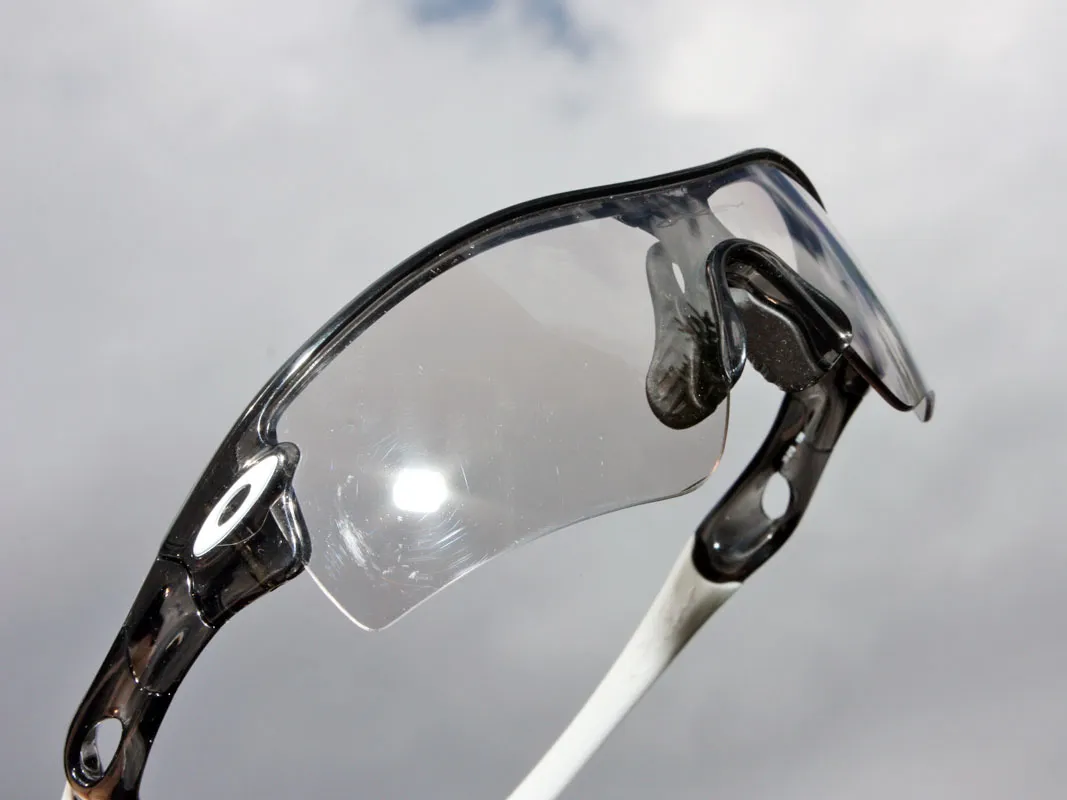Oakley's new 'Clear Black Iridium' photochromic lens tint for their popular Radar frame style is an ideal option for rides with variable lighting conditions. This includes rides that start or end in darkness, 24-hour endurance events, and even trail rides which involve constantly moving in and out of heavy tree cover.
Claimed transmission range is 10-66 percent, but to our eyes it seems much higher than that. The lightest tint is just shy of totally clear and is wholly passable well after sundown. Transition times are usefully quick, too, with light-to-dark conversions coming on in just a few seconds and the opposite direction taking just a bit longer (Oakley say the non-equal times are commonplace with all photochromics).
The flipside of the shifted transmission range is that the other end isn't nearly as dark as the standard Black Iridium lens it's supposed to emulate (we lined them up side-by-side to check). While it offers ample protection from sunlight and glare in most conditions, the medium-dark tint is still overpowered in extremely bright sunlight, especially at higher altitudes where there isn't as much air to filter out the sun's rays (testing grounds near our office in Boulder, Colorado sit at 5,400ft/1,650m and up).
Otherwise, the usual benefits of Oakley's Radar model still apply, including best-in-class optical clarity, a slip-free three-point fit with hydrophilic ear and nosepieces, and superb edge-to-edge coverage against wind and debris with no lower frame to obstruct the view. An optional thicker nosepiece helps tune the fit even further (great for time trials or anyone who rides with their head tilted further down than average) and the hydrophobic lens coating does a good job of shedding road spray and dripping sweat.
Certain aspects of the Radar are starting to make the glasses show their age, though, including a tint swap procedure that requires liberal handling of the lens itself (and subsequent cleaning) and long, straight earstems that can interfere with some helmet retention systems. And yes, it's very expensive compared to the multitude of budget models out there. However, it is still noticeably superior to almost all of them in terms of lens quality – the thing that really matters – as a result.



